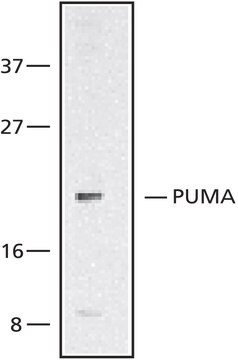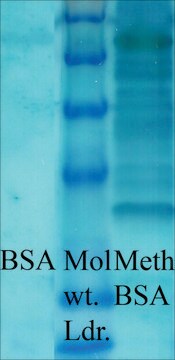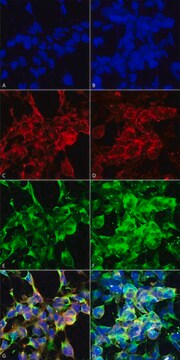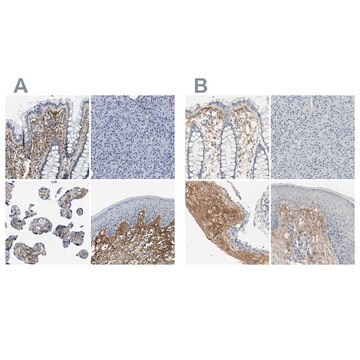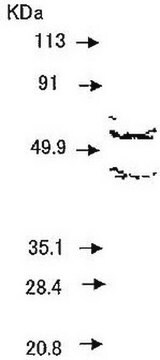General description
Chronic accumulation of Advanced Glycation End products (AGEs) is a common feature during aging, hyperlipidemia, and diabetes and affects function of proteins, lipids, and DNA. Although formation of AGE products is considered to be predominantly an endogenous process, certain external factors, such as some dietary products and smoking can increase the level of AGE in tissues. Under certain conditions glucose may form covalent adducts with the plasma proteins through the process of glycation. Glycation is a non-enzymatic reaction of reducing carbohydrates with lysine side chains and N-terminal amino groups of proteins. The term AGE often refers to non-reactive terminal products, such as N- carboxymethyllysine (CML) as well as reactive precursors, such as methylglyoxal (MG). CML is an AGE product that is usually found on proteins and lipids as a result of oxidative stress and chemical glycation. Excessive glycation can disrupt protein function by altering enzyme activity, receptor function, and molecular conformation. Protein glycation and subsequent formation of AGE products contributes to the pathogenesis of diabetes-related complications, such as retinopathy, nephropathy, and neuropathy. Higher levels of CML have been linked to greater hip fracture risk in older adults, independent of bone mineral density. AGE products interact with a variety of cell-surface AGE-binding receptors (RAGE) that results in their endocytosis and degradation. It can also generate pro-oxidant and pro-inflammatory events in cells. AGE products could also contribute to the development or worsening of many degenerative diseases, including Alzheimer′s disease. (Ref.: Cai, W., et al. (2002). Mol. Med 8 (7): 337-346; Barzilay, JI et al (2014). J. Bone Miner. Res. 29(5):1061-1066).
Specificity
Clone 6C7 specifically reacts with carboxymethyl lysine modified proteins.
Immunogen
Carboxymethyl Lysine modified Keyhole Limpet Hemocyanin (KLH).
Application
Anti-AGE, Carboxy-Methyl Lysine, clone 6C7, Cat. No. MABN1837, is a highly specific mouse monoclonal antibody, that targets Carboxy-Methyl Lysine (CML) modified proteins and has been tested in Immunohistochemistry (Paraffin).
Research Category
Neuroscience
Quality
Evaluated by Immunohistochemistry in mouse kidney tissue.
Immunohistochemistry Analysis: A 1:50 dilution of this antibody detected AGE, Carboxy-Methyl Lysine in kidney tissue of mice fed high AGE diets.
Physical form
Format: Purified
Protein G purified
Purified mouse monoclonal antibody IgG2a in buffer containing 0.1 M Tris-Glycine (pH 7.4), 150 mM NaCl with 0.05% sodium azide.
Storage and Stability
Stable for 1 year at 2-8°C from date of receipt.
Other Notes
Concentration: Please refer to lot specific datasheet.
Disclaimer
Unless otherwise stated in our catalog or other company documentation accompanying the product(s), our products are intended for research use only and are not to be used for any other purpose, which includes but is not limited to, unauthorized commercial uses, in vitro diagnostic uses, ex vivo or in vivo therapeutic uses or any type of consumption or application to humans or animals.

